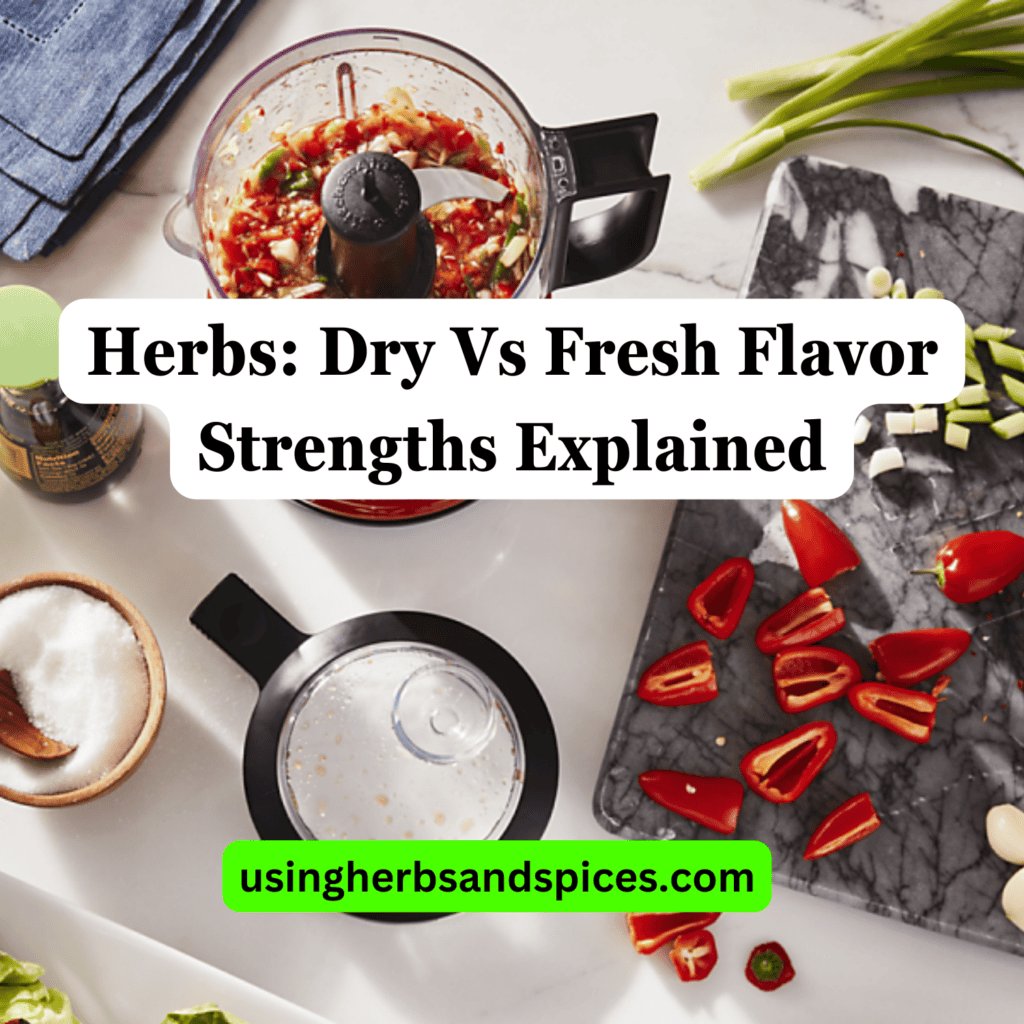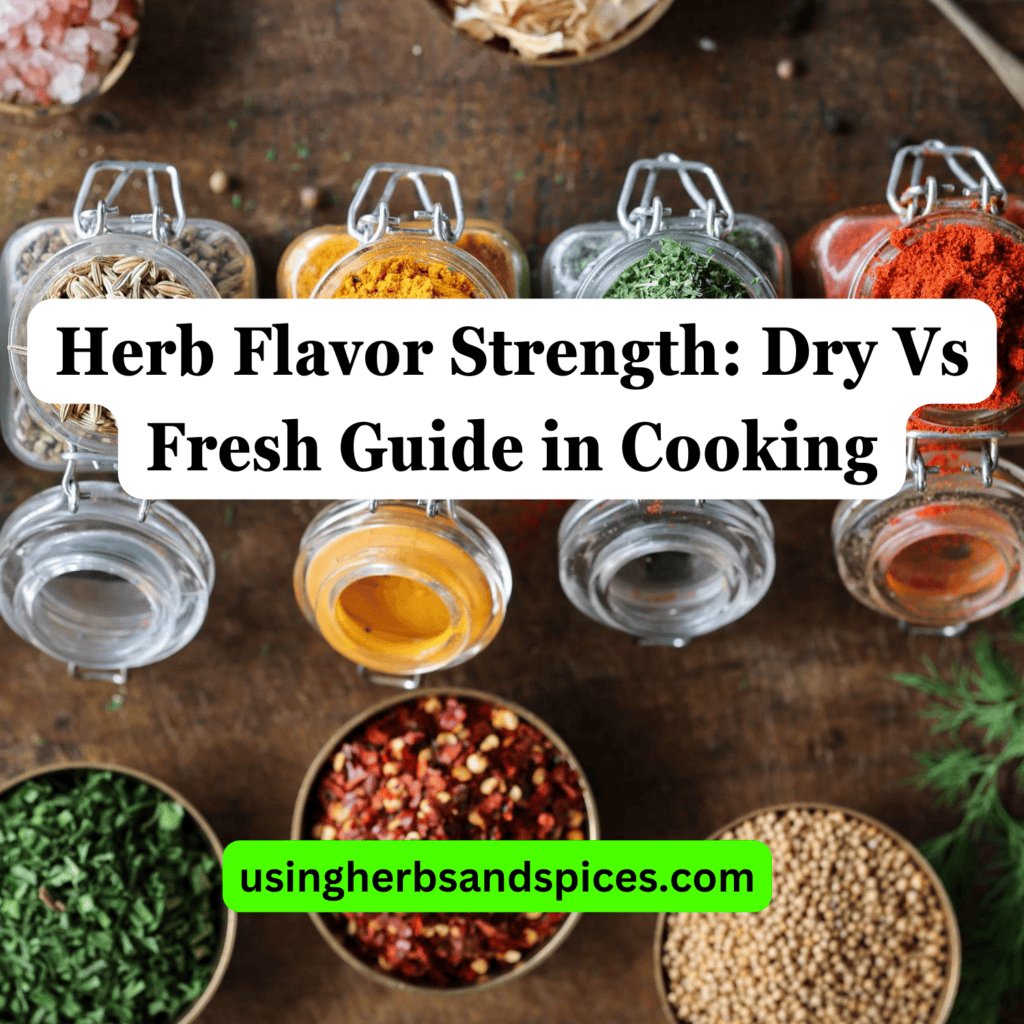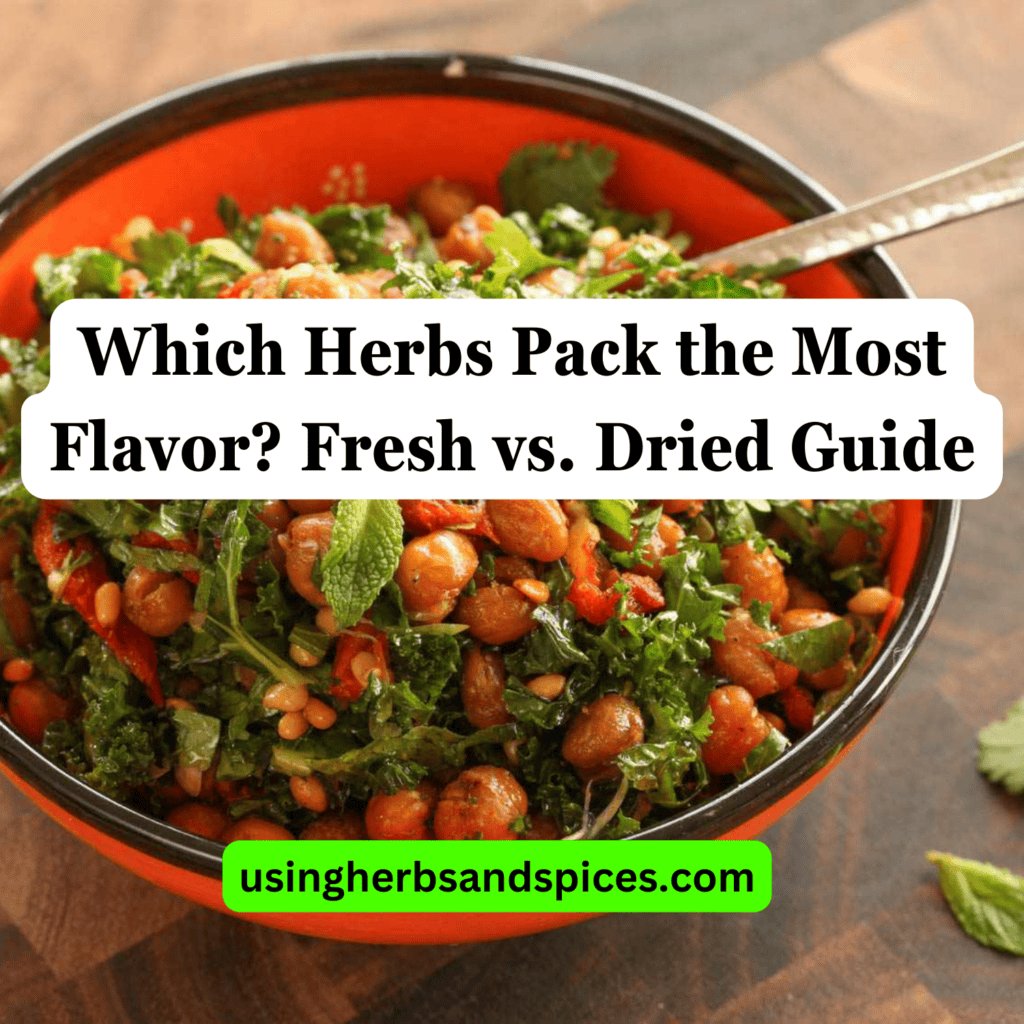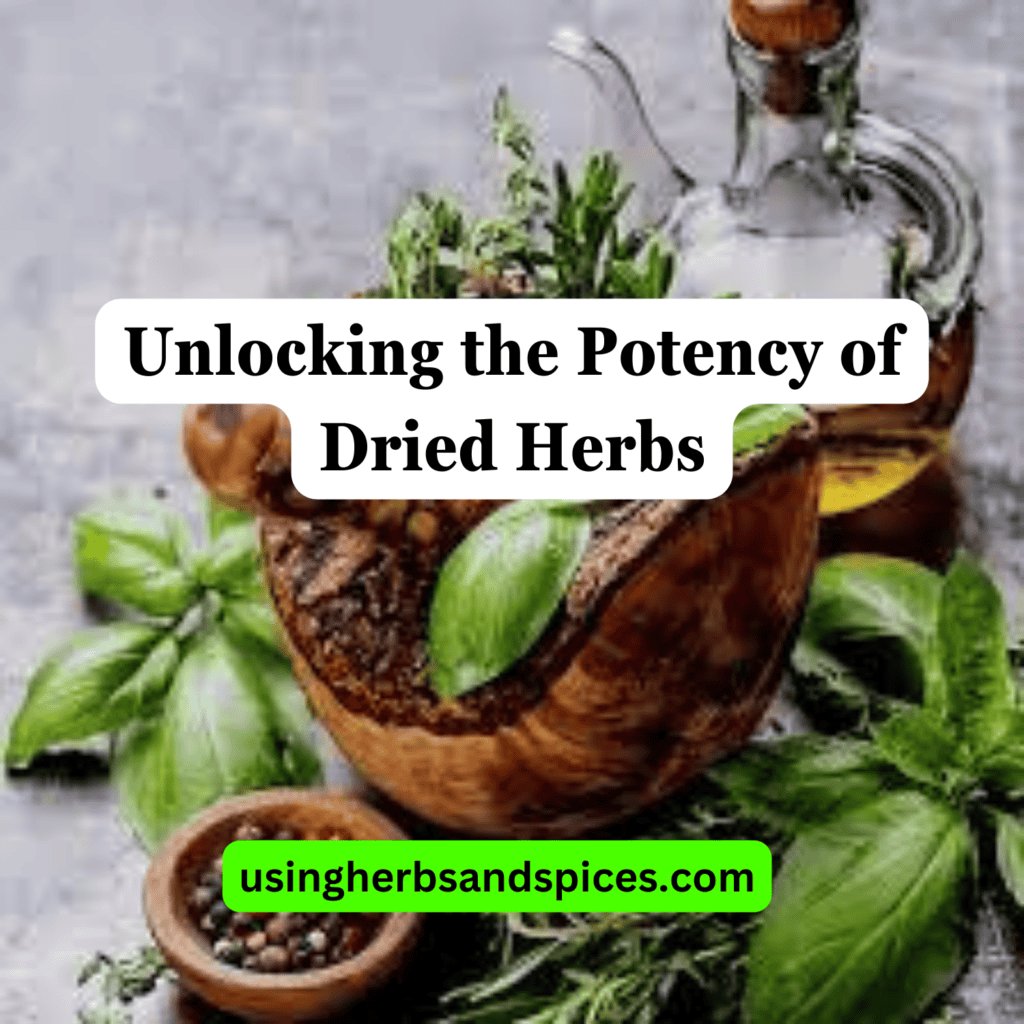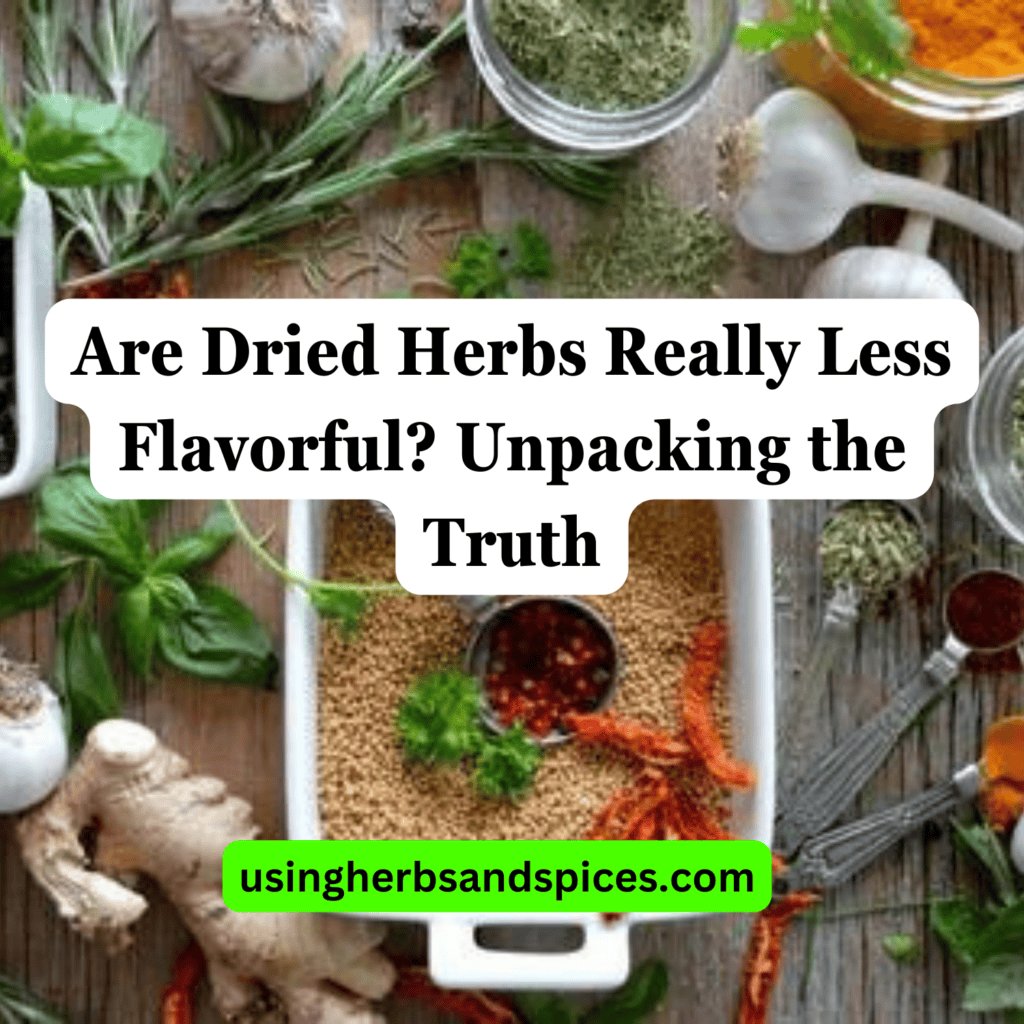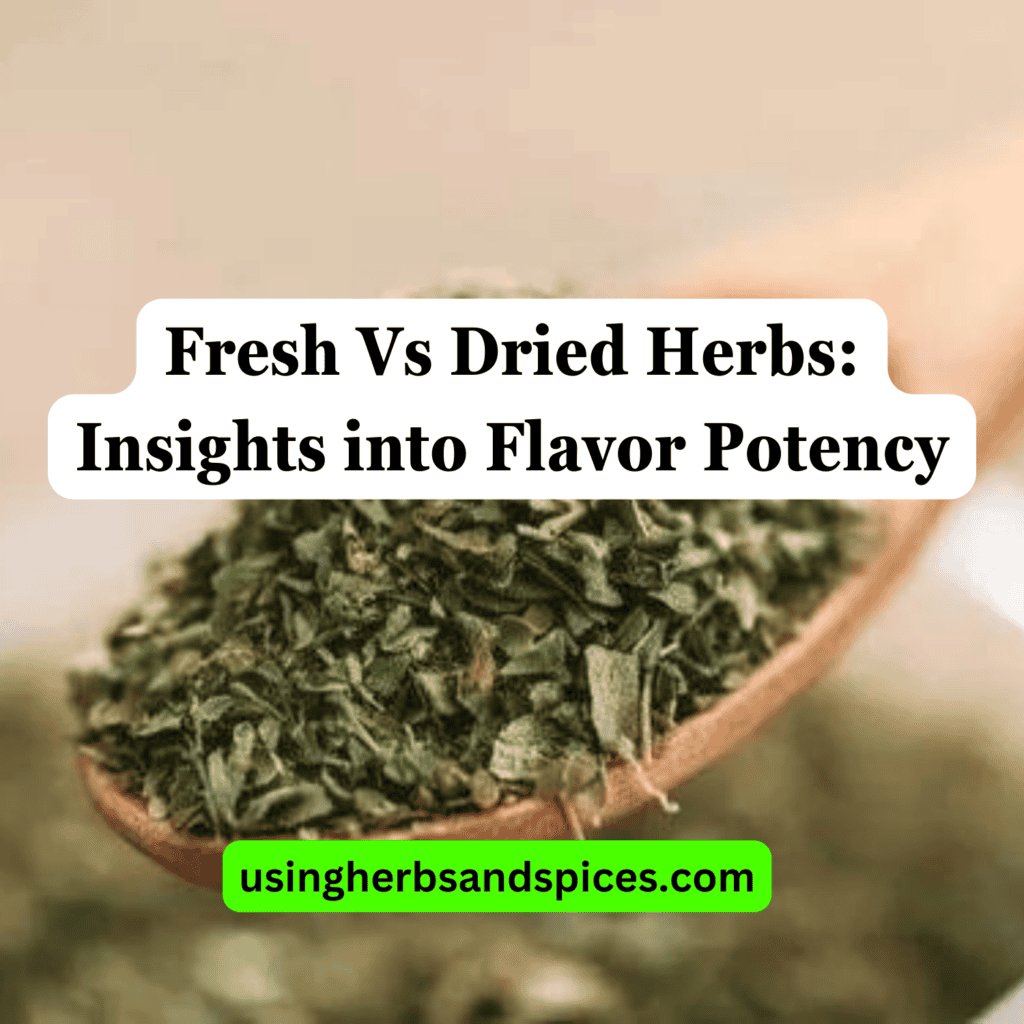SUMMARY: Dry herbs are generally more potent because drying concentrates their flavors and aromas, but fresh herbs bring a vibrancy and fullness that is unmatched in certain cooking and therapeutic contexts. Knowing whether to use dry or fresh depends on the type of herb and the intended use.
Ever wondered why some recipes specify using either fresh or dried herbs?
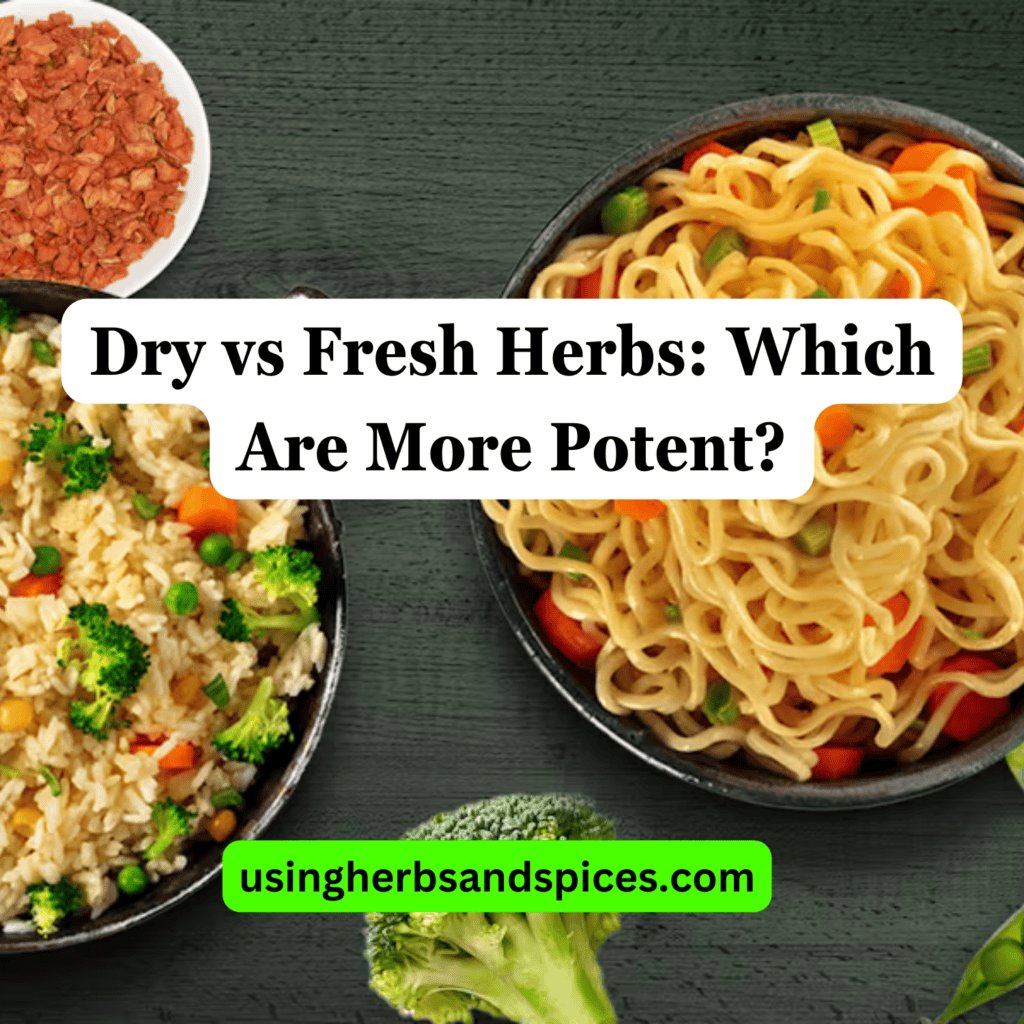
This guide will delve into the potency differences between dry and fresh herbs, providing clarity on this culinary conundrum.
- Understanding Herb Potency
- The Case for Dry Herbs
- The Strength of Fresh Herbs
- Best Practices for Using Herbs
Continue reading to discover the best ways to utilize herbs in your cooking and make informed decisions on which form to use for maximum flavor and benefits.
Understanding Herb Potency
At the heart of the debate between fresh and dried herbs lies the concept of herb potency. Potency in herbs is primarily determined by the concentration of essential oils and active compounds that contribute to their flavor, aroma, and health benefits. These essential oils are volatile and can be affected by various factors, including the herb’s form. During the drying process, water content in the herbs evaporates, often leaving behind a more concentrated form of the herb’s essence. This means that, gram for gram, dried herbs can be more potent than their fresh counterparts. However, the process of drying can also degrade some sensitive compounds, altering the balance of flavors and medicinal properties.
Different herbs react uniquely to the drying process. For some, drying enhances their flavor and makes them more suitable for certain dishes and applications. For others, freshness is key to preserving their delicate flavors and health benefits. Understanding these nuances is crucial for making the best use of herbs in culinary and therapeutic contexts.
The Case for Dry Herbs
When it comes to the potency of herbs, drying them out can significantly concentrate their flavors and aromas. This is primarily due to the reduction of water content, which intensifies the essential oils within the herbs, making the dried form more potent, pound for pound, than their fresh counterparts. For instance, herbs such as oregano, thyme, and rosemary are typically more potent when dried. This is why they are often preferred in cooking processes that involve longer simmering times, where they can release their complex flavors into dishes.
Moreover, the practicality of using dry herbs extends beyond just their concentrated taste. Dry herbs have a much longer shelf life than fresh herbs, making them a staple in pantries for their accessibility and convenience. They can be used in seasoning blends, teas, and even as remedies in traditional medicine practices. The key advantage lies in their ability to deliver consistent flavor intensity over time, offering a reliable ingredient for both culinary and therapeutic applications.
The Strength of Fresh Herbs
Fresh herbs possess an unmatched vibrancy and fullness of aroma that significantly enhances culinary creations and therapeutic practices. The potency of fresh herbs is not just in their strong, immediate flavors but also in their health-promoting properties. Fresh herbs like cilantro, parsley, and basil are known to maintain their potent essential oils when they are used fresh. These oils are the main carriers of the herbs’ flavors, aromas, and healing benefits, which may lose their intensity when dried. In the kitchen, fresh herbs are often added towards the end of the cooking process or used as garnishes to preserve their flavor and nutritional value. Similarly, in herbal medicine, fresh herbs are prized for their lively essence and superior efficacy in certain remedies and applications.
Culinary experts often favor fresh herbs for their ability to impart a bright and precise flavor that dried herbs cannot match. The subtlety and complexity of fresh herbs make them ideal for salads, dressings, and dishes that rely on the freshness of ingredients to shine. Moreover, fresh herbs, when added to a dish, can introduce a burst of color and texture that enhances the visual appeal and overall eating experience. Therapeutically, fresh herbs are used in tinctures, teas, and poultices to leverage their full spectrum of medicinal properties immediately after harvesting. This is because the active compounds present in the essential oils are at their most potent level when the herbs are fresh, offering maximum benefits.
Best Practices for Using Herbs
Choosing between dry and fresh herbs depends on the flavor profile you desire and the context of their use. For instance, dried herbs are best added during the cooking process to allow their flavors to infuse throughout the dish. In contrast, fresh herbs are most effective when added at the end of cooking or used as a garnish to preserve their flavor and nutritional content. When storing herbs, dry ones should be kept in a cool, dark place in airtight containers to maintain their potency. Fresh herbs can be stored in the refrigerator; some, like basil, may last longer when placed in a cup of water at room temperature.
To incorporate herbs into your diet for maximum benefit, consider using them in a variety of ways – from infusing them into oils and vinegars to including them in your cooking, baking, and even in drinks. When substituting dry herbs for fresh in recipes, a general rule of thumb is to use one-third the amount of dry herbs as you would fresh, due to the concentrated flavors of dried herbs. However, remember that the potency of herbs, whether dry or fresh, decreases over time, so using them within their optimal period ensures the best flavor and health benefits.
Choosing Between Dry and Fresh for Optimal Flavor and Use
In summarizing our exploration into the potency of herbs, it becomes evident that the choice between dry and fresh depends greatly on specific needs, preferences, and applications. Here are the key takeaways:
- Herb potency is influenced by the concentration of essential oils, which can be affected by whether the herb is used in its dry or fresh form.
- Dry herbs often offer a more concentrated flavor, making them ideal for dishes that require cooking over time or for storage purposes.
- Fresh herbs provide a vibrant and full aroma, perfect for enhancing dishes with a burst of freshness or for use in therapeutic applications.
- The decision on whether to use dry or fresh herbs should be guided by the intended culinary or therapeutic use, considering the unique properties each form brings to the table.
- Understanding the characteristics and best uses of both dry and fresh herbs can significantly enhance the flavor, nutrition, and overall quality of your dishes and health remedies.
This analysis simplifies the complex nature of herb potency, providing clarity for both novice and experienced individuals looking to make informed decisions when selecting herbs for their various needs.
What Herbs Are More Potent: Dry or Fresh? FAQs
What are essential oils in herbs and how do they affect potency?
Essential oils in herbs are concentrated compounds that carry the flavor and fragrance of the herb. These oils are what give herbs their potency, with the concentration of these oils often being higher in dried herbs due to the reduction in water content. Therefore, understanding the essential oil content can help gauge the potency level of herbs, whether dry or fresh.
How do I properly store fresh and dry herbs to maintain potency?
Fresh herbs should be stored in the refrigerator, wrapped loosely in a damp paper towel or in a cup of water if they have stems, to maintain moisture and freshness. Dry herbs, on the other hand, are best kept in airtight containers in a cool, dark place to protect them from light and moisture, which can diminish their potency. Proper storage is crucial for preserving the essential oils and the overall potency of the herbs.
Can I substitute dry herbs for fresh in recipes? If so, what’s the ratio?
Yes, you can substitute dry herbs for fresh in recipes; however, due to the concentrated flavors of dry herbs, you will need less. A general guideline is to use one-third the amount of dry herbs to fresh. For example, if a recipe calls for 3 tablespoons of fresh herbs, you would use only 1 tablespoon of dry herbs. This ratio ensures that the dish maintains its intended flavor profile without becoming overpoweringly herbaceous.

